How To Draw A Gene Map
Tutorial: How to describe a basic dungeon map
Update! This and many more than tutorials on fantasy and D&D map making is availible also on my website, together with loads of gratis-to-download maps, check it out — click here!
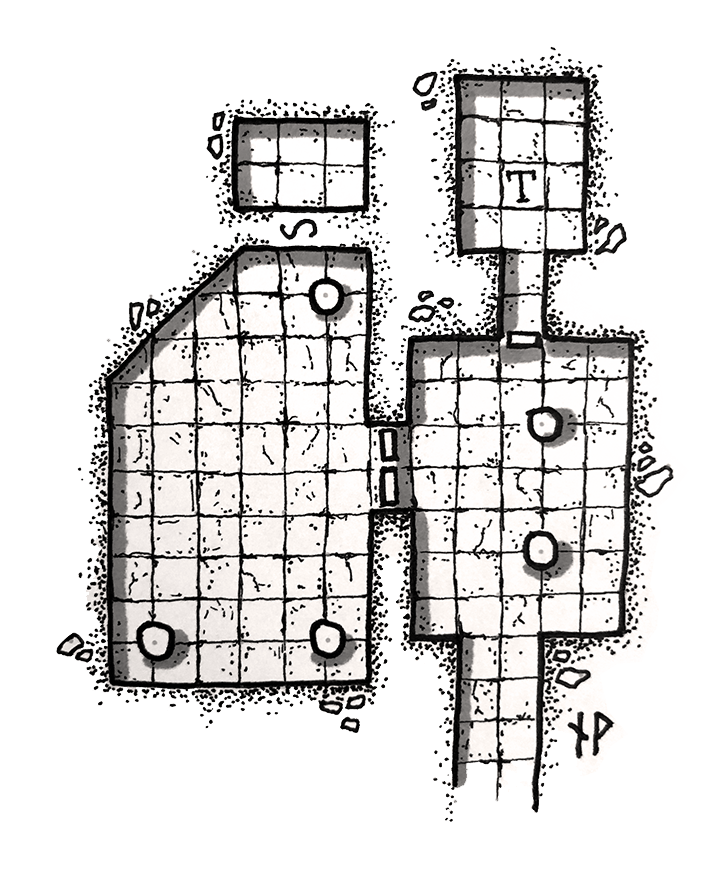
I enjoy cartoon maps for roleplaying games like Dungeons & Dragons. Always since I was a kid, I enjoyed drawing, peculiarly mystical places like monster strongholds, secret lairs and abased catacombs. Sometimes when I post my maps online, people ask me for communication on how to get started, and even though I'm far from an potency on the field of study, I though a short and simple tutorial could be of assistance, and so hither goes!
This tutorial will bear witness you how to depict a simple elevation-down map, with no special features such every bit article of furniture or other objects. Y'all can of course add a lot of complexity by adding "dungeon dressing", or even draw the map from another perspective, such as isometric. Only permit'south become started with this style.
Annotation: since this tutorial was published, I've also fabricated a tutorial on how to describe isometric maps, y'all tin read information technology here: https://medium.com/@niklaswistedt/tutorial-how-to-draw-an-isometric-dungeon-map-dc1a88737be0
The gear
A lot of people prefer to describe digital maps, using tools similar Photoshop. I, however, adopt to draw by manus.
Get-go of all, make sure you take decent tools to work with. For this tutorial, I've used three sizes of Micron markers (0.5, 0.1 and 0.05), an ice gray 4 Promarker, a mechanical pencil and a note volume with dotted newspaper, from Field Notes (all the same, you could merely too use normal grid paper). None of this stuff is specially expensive, and tin be bought online. I don't accept a scanner, then all images in the tutorial are taken with an iPhone photographic camera. The end issue has had some work done in Photoshop (adapted levels, removing dots).

Step i: crude outlines
Start by cartoon your dungeon walls with a mechanical pencil. It doesn't have to be perfect directly lines, so no need for a ruler. Imperfect lines gives a nice organic look to the map.
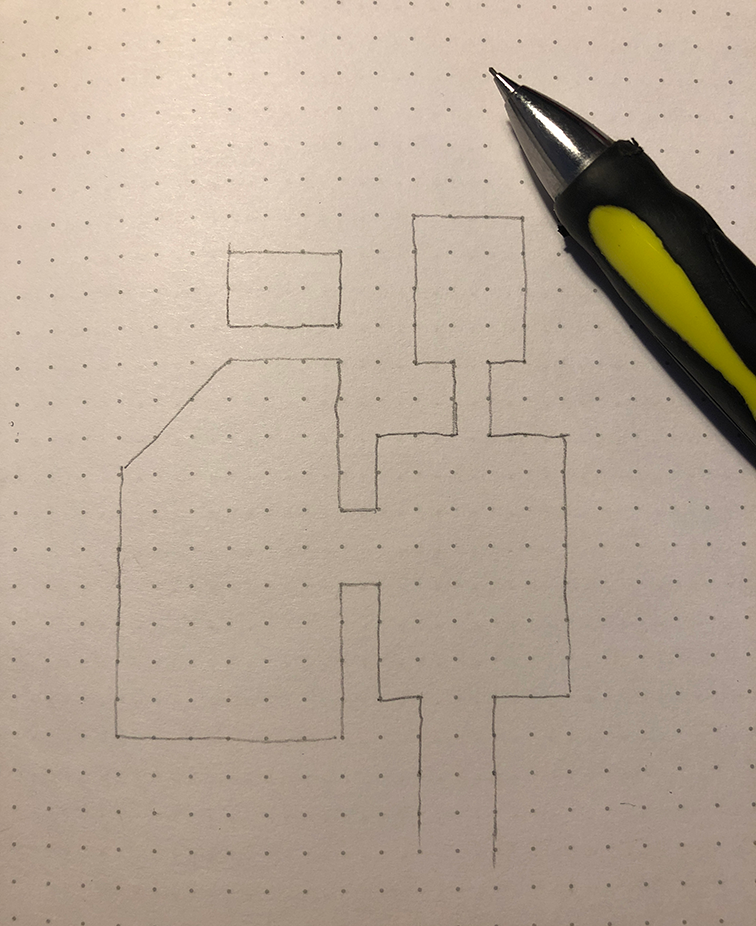
Stride 2: ink outlines
Utilise a sparse (0.1) mark to draw your outlines. Again, it doesn't have to be perfect. Permit the ink dry out for a minute, and and then erase the pencil lines. This can affect the inked outlines too, merely no worries, nosotros will have care of that in the next step.
I've likewise added a couple of doors and some pillars to the dungeon. It's usually a expert idea to add the pillars where flagstones will intersect, to provide some nice contrast, equally you lot will run into after on in the tutorial.
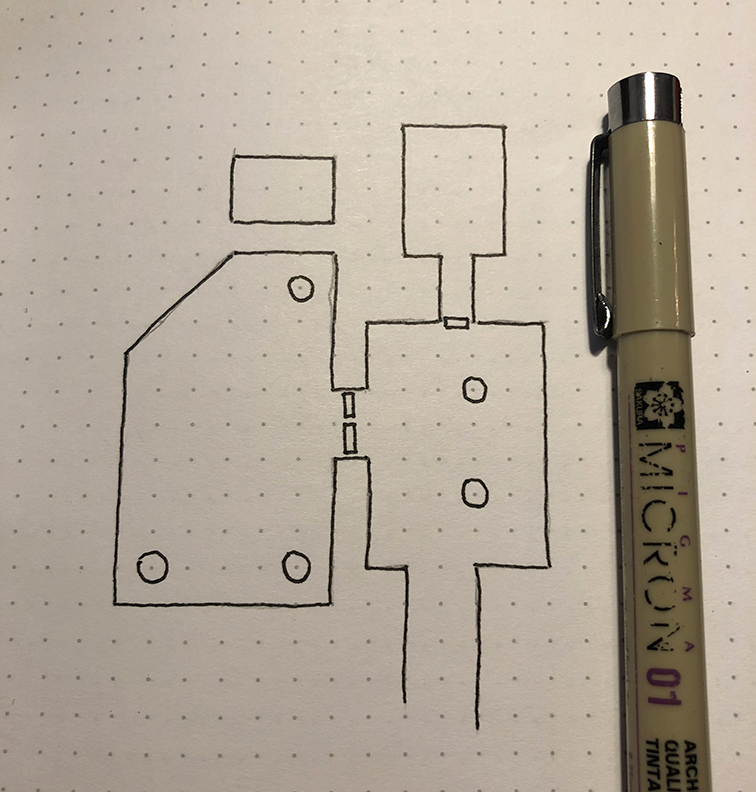
Step 3: add weight to outlines
Add weight to your outlines with a thicker mark (0.5)
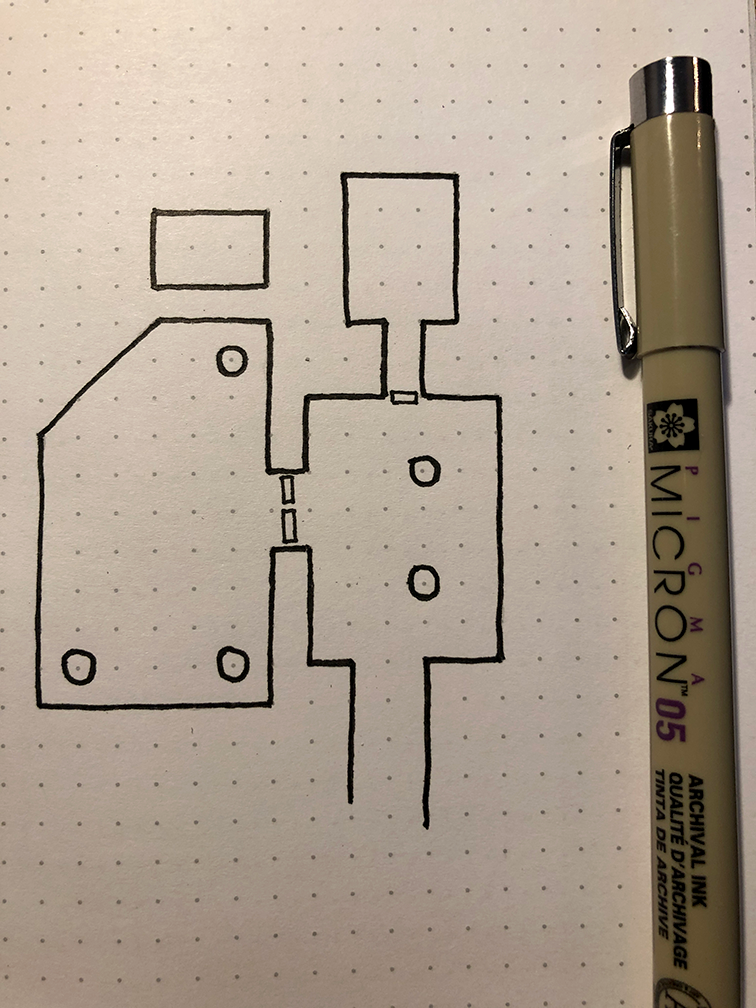
Pace four: depict flagstones
Flagstones are great. Non merely practice they add overnice detail to the dungeon, they likewise help past providing a filigree for the map, making it easier for the dungeon master to depict information technology on a battle mat should he want to use miniatures for running a gainsay meet. Use a sparse (0.05) marking to draw the lines for the flagstones.
As you can see, the pillars provide contrast to the flagstone pattern, as they are placed where the flagstones intersect, and not directly on top of a single flagstone.
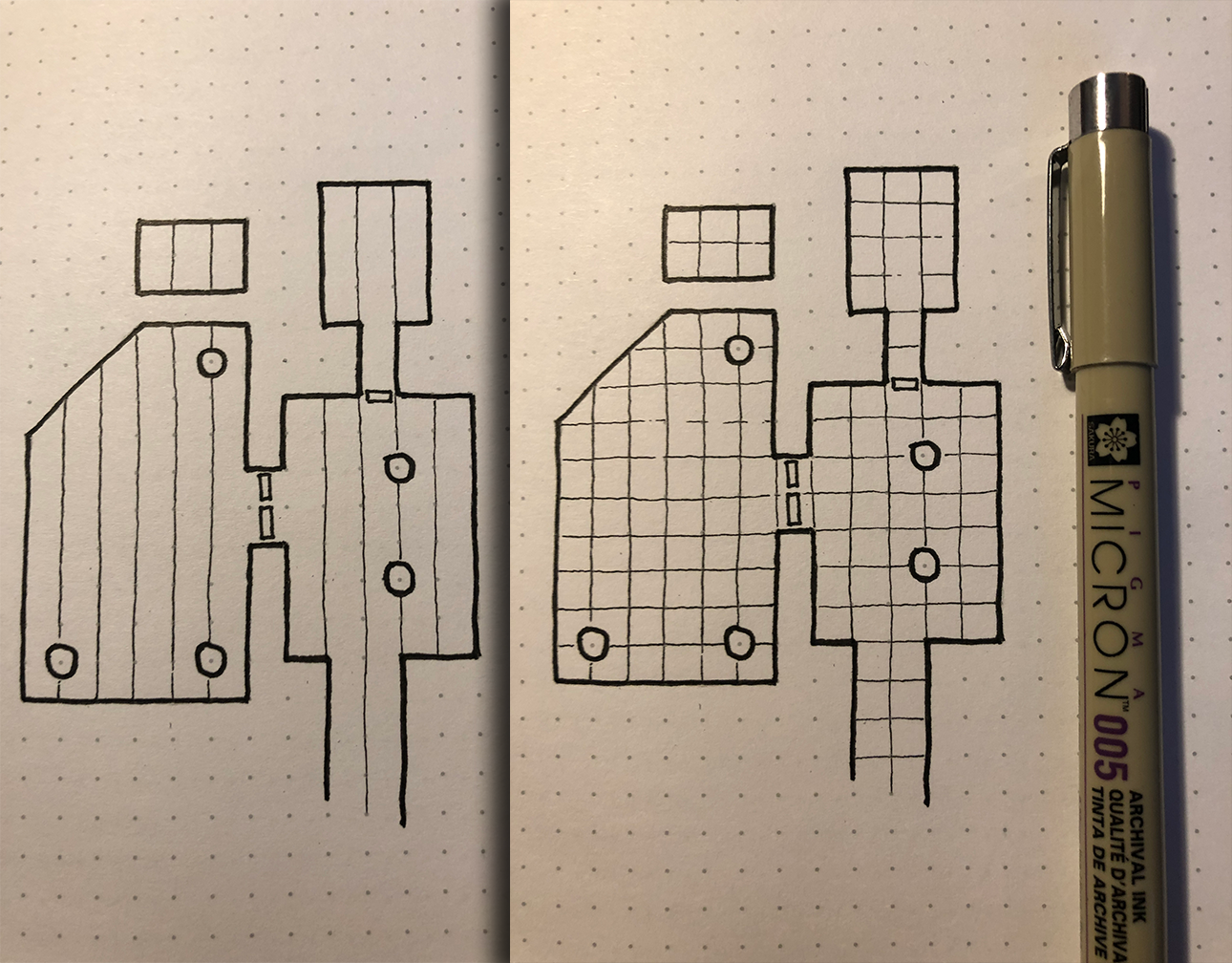
Step five: Add texture
Add some texture to the surface around the dungeon. I like calculation some rocks and and then employ small dots to provide some contrast. The idea is to have a higher "dot density" the closer y'all are to the dungeon wall. Employ a 0.one Micron marking.
I added an "S" to the map, mark out a hugger-mugger door that the players volition need to search for in order to notice.
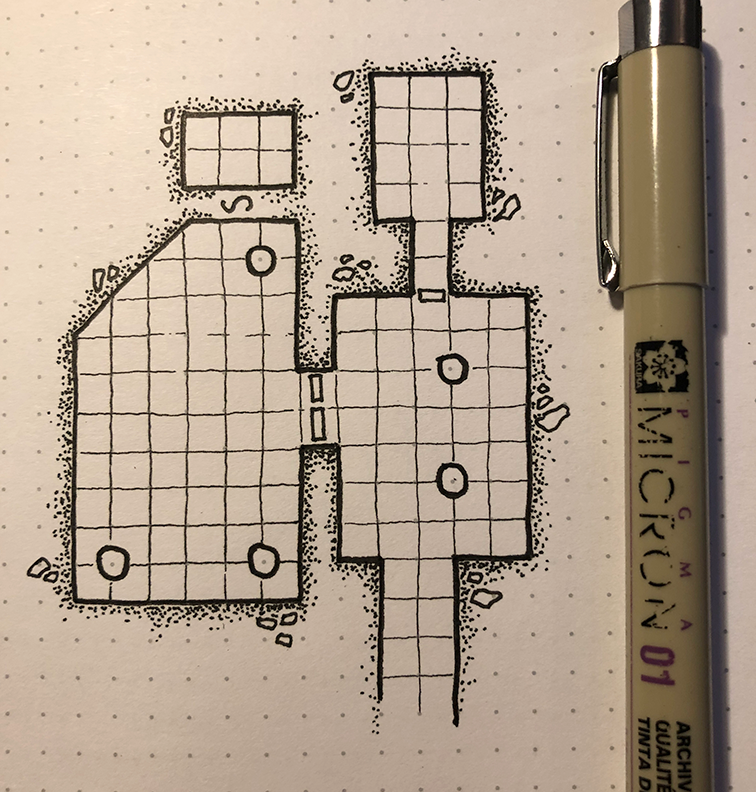
Step half-dozen: add together texture to flagstones
Add some texture (dots, small scratches, cracks) to the flagstones. Also, randomly emphasise some of the gaps between the flagstones too. Random is the keyword here: don't repeat patterns as information technology will look planned and artificial.
Utilize a sparse (0.five) marking for this step.
I decided to add a "T" to i of the flagstones, indicating a trap.
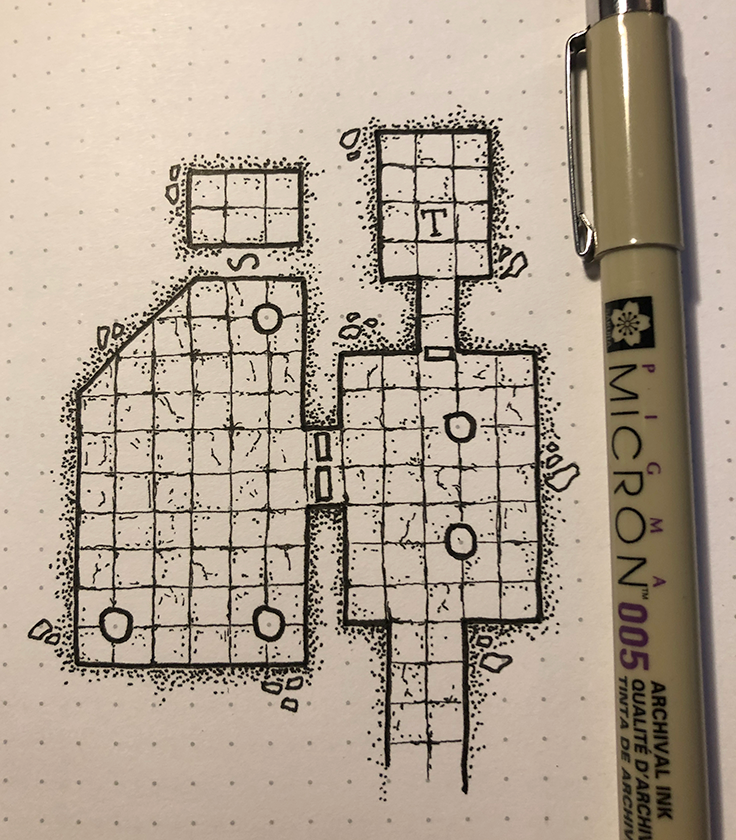
Pace vii: add shadows
To add some depth to the map, and making it look a bit more than interesting, I add some simple shadows to information technology. First decide where your imagined light source is located, in this case from the upper left corner. And then add shadows with a marker to the corresponding walls (in this case the upper and left walls). I also added some shadow to the pillars.
Use a gray Promarker (or similar) for this step.
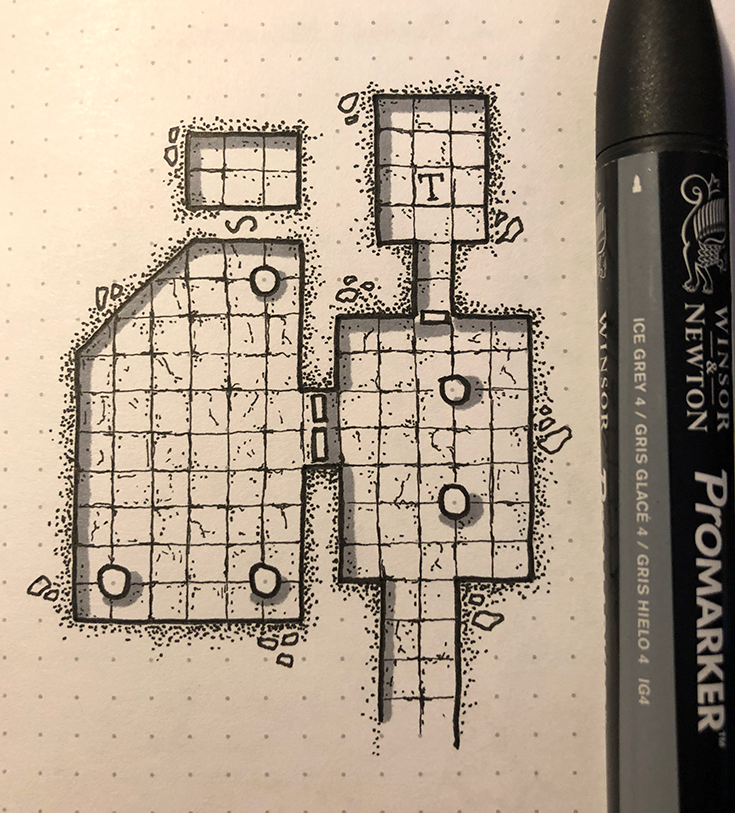
Step eight: clean upwardly
I use my phone to photograph the map I've drawn, making sure it'southward daylight outside to get a decent picture show. Of course, if you lot have a scanner that's a much improve alternative. I'm because buying one, but I'm a bit lazy, and too have a minor desk-bound.
I so apply Photoshop to work with the levels, and getting the colors right, also removing some of the dots.
And there you go, the final effect! You now have a dungeon to fill with monsters, treasure, puzzles and traps. Happy gaming!
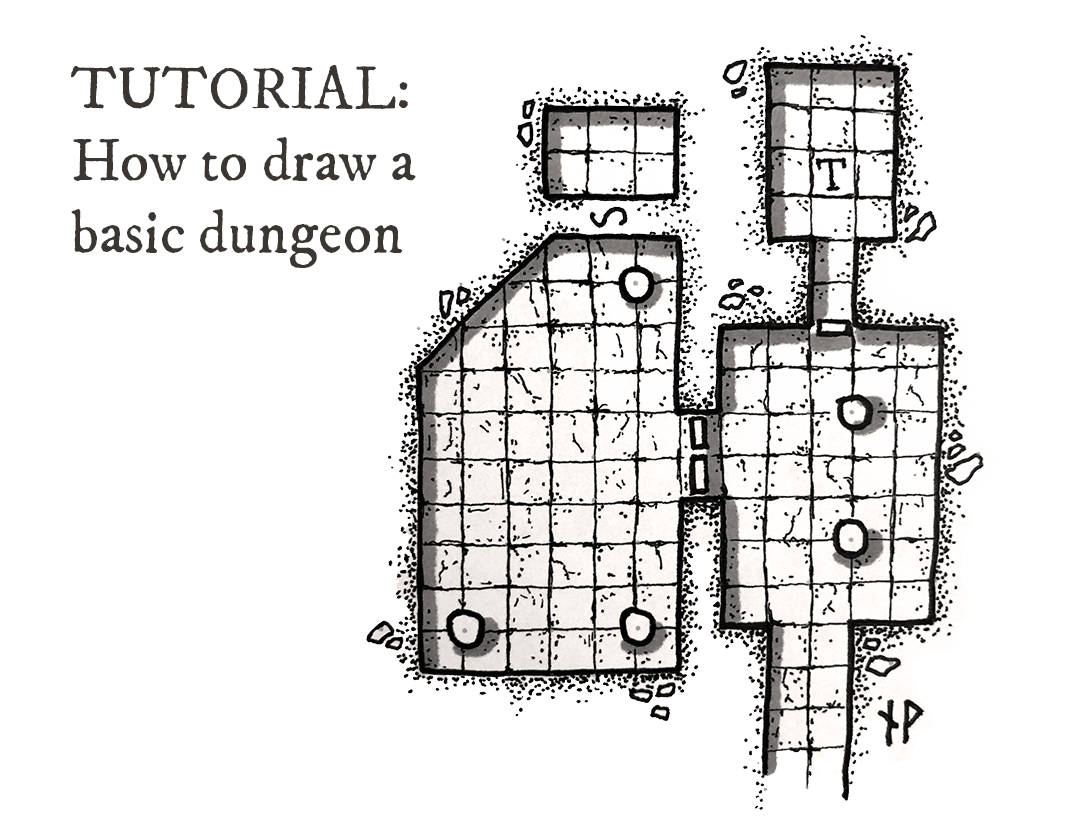
Please leave a annotate if yous enjoyed this tutorial, and let me know if you lot have whatsoever feedback.
More than resources:
I post a lot of my work on my website, at https://www.wistedt.cyberspace/. In that location you can find many maps and other RPG recources that are gratis to download for personal apply.
If yous savor my maps, delight feel free to follow me on Instagram, where I normally post my work: https://www.instagram.com/paths.peculiar/
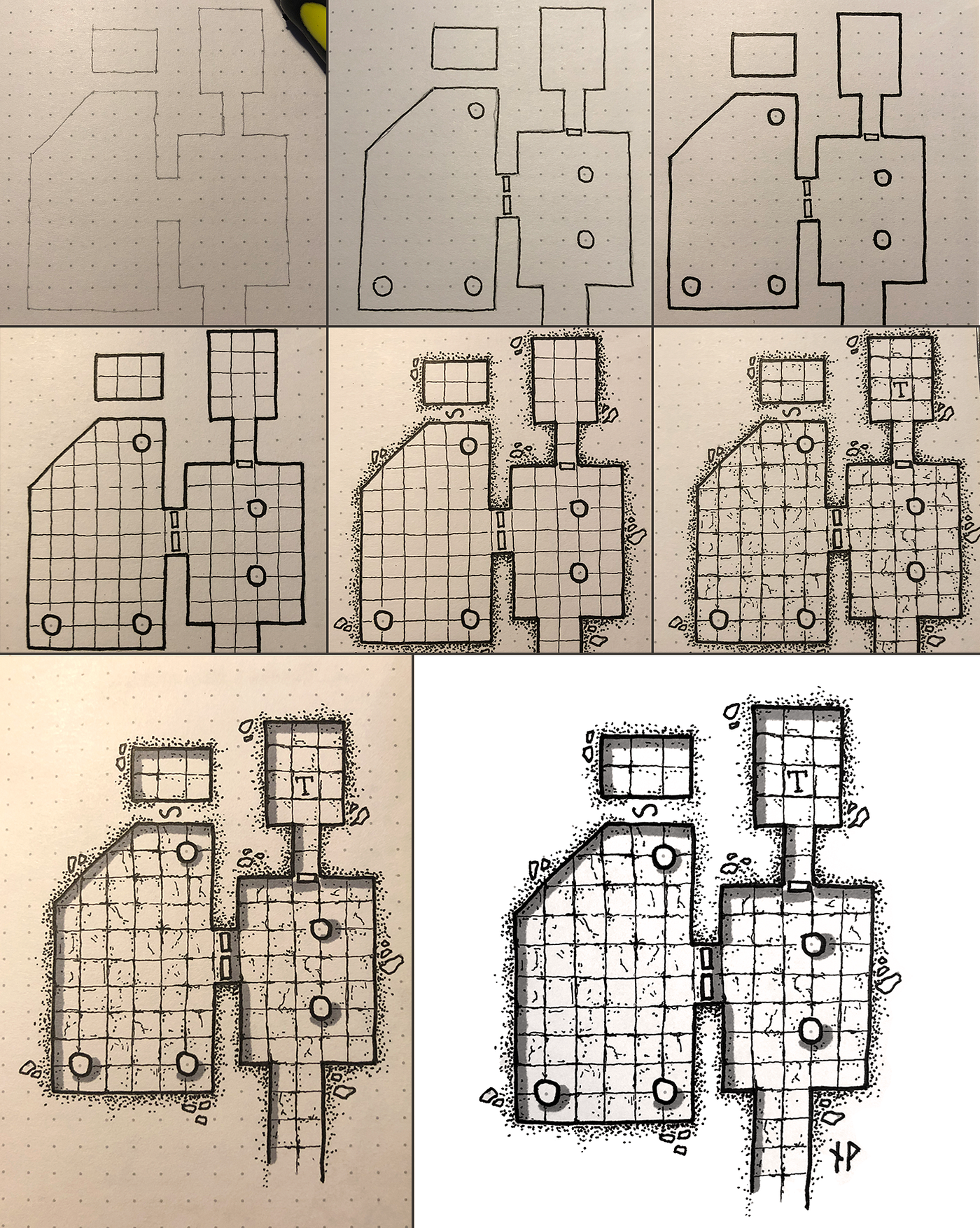
Source: https://medium.com/@niklaswistedt/tutorial-how-to-draw-a-basic-dungeon-map-c9f5c4408327
Posted by: solistheaks.blogspot.com


0 Response to "How To Draw A Gene Map"
Post a Comment